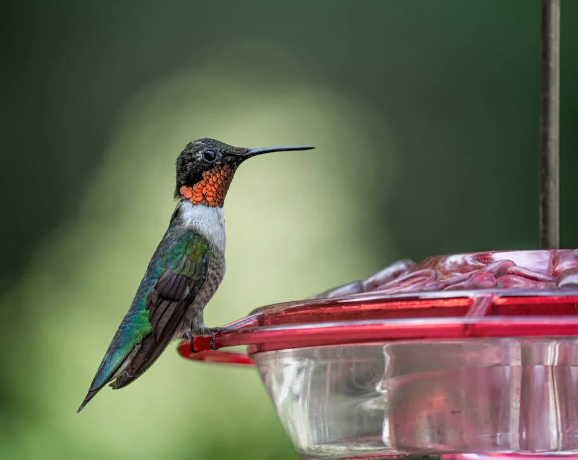Hummingbirds Begin Fall Migration Through South Carolina

The air in South Carolina is once again filled with the buzz of tiny wings as thousands of ruby-throated hummingbirds begin their journey south for the fall. This annual migration, which starts in August and peaks in September, is a crucial time for these small but mighty birds as they prepare for a long flight to their wintering grounds in Mexico and Central America.
The ruby-throated hummingbird, the most common species in the eastern United States, spends the summer months in South Carolina for breeding. As the days shorten, a biological clock triggers their instinct to migrate. The males typically lead the way in August, followed by females and juveniles in September and October.
Their migration is a test of endurance, with some birds flying up to 500 miles nonstop across the Gulf of Mexico. To prepare for this journey, they must double their body weight by consuming vast amounts of nectar from flowers and feeders.
How You Can Help
The South Carolina Department of Natural Resources (SCDNR) and other wildlife experts are encouraging residents to keep their hummingbird feeders full and clean throughout the fall. This provides a vital fuel source for the migrating birds.
- Keep Feeders Up: The notion that leaving feeders out will prevent hummingbirds from migrating is a myth. Their migration is driven by a genetic instinct triggered by the length of the day, not food availability. Leaving feeders up can provide a lifeline for late-migrating birds.
- Simple Nectar: The best solution is a mixture of one part refined white sugar to four parts water. It is not necessary to add red dye, as it can be harmful to the birds.
- Cleanliness is Key: To prevent mold and bacteria, feeders should be cleaned every few days, especially in warmer weather. A simple cleaning with hot water and a bottle brush is sufficient.
- Plant Native Flowers: Planting native tubular flowers like trumpet honeysuckle, bee balm, and cardinal flower provides a natural and essential source of nectar.
While the ruby-throated hummingbird is the main attraction, South Carolinians may also spot other species during the fall and winter, including the Rufous hummingbird, a western species that sometimes makes its way to the Southeast. Observers are encouraged to help these tiny travelers refuel for their journey ahead.
Newsletter
Stay Informed with the WRHI/CN2 Weekly Newsletter.
Get all the top stories delivered straight to your inbox every Sunday morning—just like the classic Sunday paper. Grab your coffee and catch up on everything you missed this week. Sign up today!




